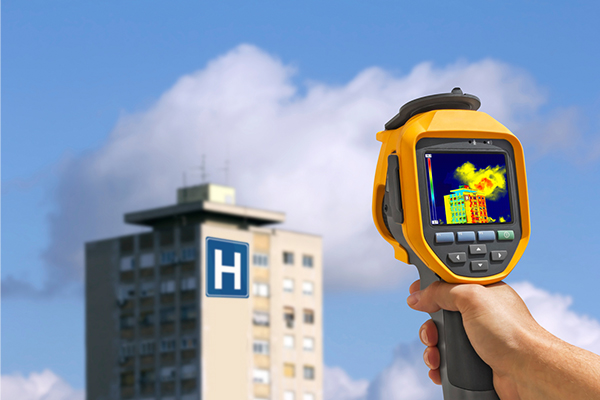Researchers reveal the hidden environmental and public health impacts of the US healthcare sector

“If the U.S. healthcare sector were itself a country, it would rank 13th in the world for greenhouse gas emissions, ahead of the entire U.K.”
So states a new paper coauthored by Matthew J. Eckelman, assistant professor in the Department of Civil and Environmental Engineering, that quantifies, for the first time, the total emissions—including greenhouse gases—that are released into the environment due to the healthcare sector and how those emissions adversely affect the public health.
The study was published on Thursday in the journal PLOS ONE.
With his coauthor Jodi Sherman, assistant professor in the Yale University School of Medicine, Eckelman tracked the vast amount of energy and materials used by facilities such as hospitals, clinicians’ offices, and nursing homes as well as the establishments that supply their products and services, including pharmaceutical and medical-device manufacturers and the government in its administration of programs such as Medicaid. They then quantified how that overall resource use contributed to emissions and public health impacts.
The results sounded an alarm. Over the past 10 years, the researchers estimated, the sector’s greenhouse gas emissions grew by more than 30 percent, accounting for nearly 10 percent of the national total in 2013. Damages to health that year from the pollutants rang in at 405,000 “disability adjusted life years,” or DALYs—a measure of years lost due to ill health, disability, or early death. That “health burden,” they wrote, was “of the same order of magnitude” as lives lost to preventable medical errors, which numbers 44,000 to 98,000 people each year.

Matthew Eckelman, assistant professor, tracked the energy used by the healthcare sector. Photo by Adam Glanzman/Northeastern University
Yet the researchers also revealed an upside to the findings. “Many hospitals engage in sustainability activities such as green purchasing in an effort to reduce their energy use without compromising patient care,” says Eckelman. “What the paper shows are the indirect benefits of those practices. The hospitals are saving money and reducing energy, but they’re also reducing damage from pollutants and thus improving public health.”
From emissions to outcomes
The U.S. spends more on its healthcare system than any nation in the world, with large sums going toward heating, ventilating, air conditioning, refrigeration, lab equipment use, and food service, among other activities. The researchers turned to sophisticated modeling tools to handle the mountains of data.
First they fed national health expenditure data for health-sector products and services into a tool called input-output life cycle assessment, which translates dollars spent into quantity of emissions released throughout the healthcare supply chain. Those expenses included everything from electricity costs to charges for disposing medical waste in landfills.
We can save a lot of money while also producing significant health benefits for the public.
— Matthew Eckelman, assistant professor
Then, using an assemblage of damage-assessment methods, they linked the quantity of emissions released to the environmental and public health outcomes from thousands of pollutants. Those outcomes ran the gamut: acid rain, global warming, smog formation, ozone depletion, respiratory disease from particulate matter, and cancer from chemical exposure, among others.
“Before this, we didn’t have a sense at all about what the public health impacts were of the sector’s non-greenhouse gas emissions, which are really the ones more associated with public health impacts,” says Eckelman.
Treatments as well as diagnoses
The paper offers not just diagnoses, however; it also recommends treatments.
The researchers describe recent efforts to reduce emissions throughout the healthcare life cycle, citing the aims set by the Institute for Healthcare Improvement, an organization dedicated to improving healthcare worldwide for individuals and populations while cutting costs. These include measures for designing more energy-efficient lighting, heating, and cooling systems; reducing waste of pharmaceuticals; and rethinking the use of medical and surgical kits so unused components aren’t tossed, as they generally are now.
“Quality of care is paramount,” says Eckelman. “But what research has uncovered is that there is much waste in the system that has nothing to do with quality of care, and that’s what we should all be targeting. We can save a lot of money while also producing significant health benefits for the public.”





